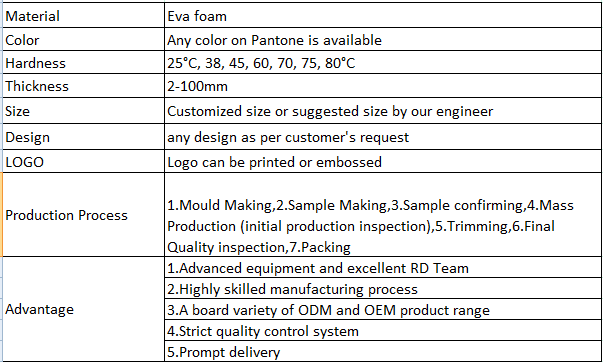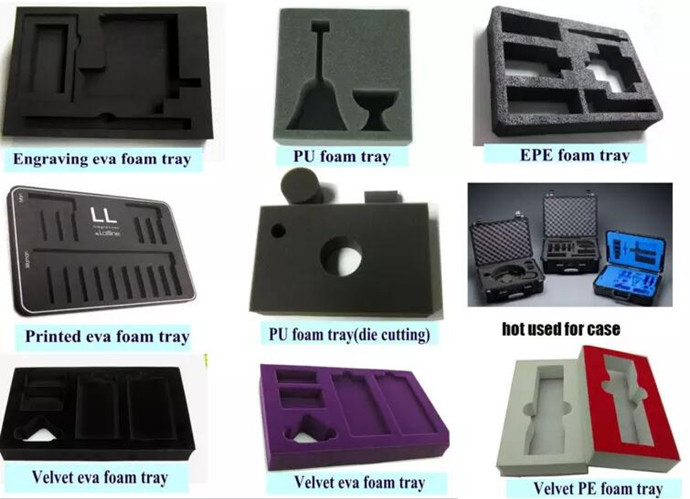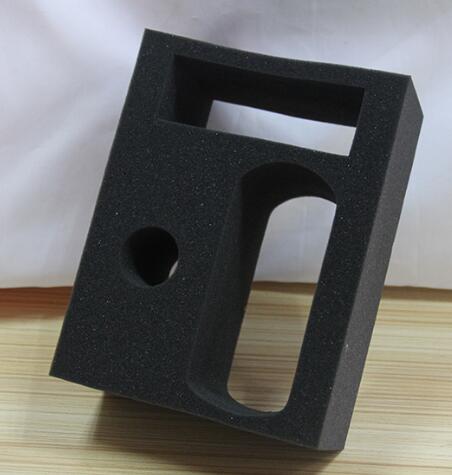Shaiban is the link between the whole plate making process. The quality of the printing plate directly affects the quality of the printed product. For many years, printing has been done by the master with an apprentice or by experience. Since the quality of the printing plate directly influences the overall product quality, it must be regulated by objective means so that the operation of the PS plate can be standardized, digitized, and standardized, thereby improving the work efficiency and improving the product quality.
First, the quality control of printing plate
The stencil sheet can be divided into text, image and graphic text. The image is divided into two types: dot and field. The two important indicators of quality control are dot density and dot halo.
1. Density of the dots The photochemical reaction of the photosensitive layer of the printing plate occurs during the exposure process, and the visible portion is dissolved by the alkaline developer during development, and an unexposed image portion (constitution of dots) appears. Therefore, in order not to allow part of the network to cover the amount of light through, it requires a large enough density network, according to the Fogra standard, the density of the printing plate Internet point shall not be less than 2.30, that is, the transmittance of the network part is less than 1/200.
2. The density of dots on the halftone printing plate of the dot halo should be the same from the center to the edge, so that the dot can be truly restored and transferred to the printing plate after exposure and development. However, in actual practice, some dot centers tend to have high density, low density around the periphery, and some imaginary edges. When the exposure and development are slightly changed, the virtual halo dots will shift to the printing plate and cause dot size and shape to occur. Changes have occurred with the loss of small outlets. The imaginary halo of the original text is mostly expressed in the strokes and fine strokes of the text, resulting in a reduction in the size of the typographic plates and the lack of writing. According to the Fogra standard, the original virtual halo width cannot be greater than 4 mm. Only in this way can the true reduction and transfer of the graphic and text be ensured.
Second, exposure control
1. There are two definite indicators for the light source used in the printing of the printing plate. One is the spectral characteristic of the light source; the other is the uniformity of the illumination. The photosensitivity spectrum of the photosensitizer of Yanggu PS is in the range of 300-460nm, and the most sensitive spectral region is 370-400nm. The spectral energy emitted by today's metal halide lamps (such as iodine lamps) is concentrated between 300-450nm (see figure), and the illuminance is even, the light does not scatter and generate less heat, and no harmful gas is precipitated. Ideal light source.
The uniformity of the light source will directly affect the quality of the plates after the printing. Due to the non-uniform illumination, the photosensitive coating on the printing plate is not uniform and incompletely decomposed, resulting in defects in some sites and images, and some areas are underexposed or overexposed, resulting in image adjustments and dots on the original plate. It cannot be completely transferred to the plate. Therefore, be sure to use a light meter to test the four corners and the center position of the exposure plate, and then use the formula to calculate the attenuation rate of each detection point of the plate press a=Emax-E1/Emax'100% (E1 is a measurement point. Illuminance, Emax a measurement point maximum illumination), attenuation rate of 5% to 10% is desirable, the attenuation rate of 20% can still be used, if the attenuation rate exceeds 20%, then use the printing machine printing plate outlets The transfer has a significant impact and must be improved or replaced.
2. Exposure time The exposure efficiency of the photosensitive layer is that with the irradiation of light, the photochemical reaction gradually decreases from the surface to the inside. The length of the exposure time plays a crucial role in controlling the network transfer and improving the resolution. Positive PS version of the exposure time is too long, due to the diffraction of light, so that the photosensitive layer should not see the light also see the light decomposition, resulting in dot distortion, a small dot loss, text lines thin and short strokes broken painting. Reducing the quality of the printed matter and the printing force of the printing plate; Insufficient exposure time, incomplete decomposition of the photosensitizer of the photo-resist layer, enlargement of dot sites, dark-adjustment of easy-to-paste printing plates, and printing plates appearing dirty after normal development, printing on the machine Easily dirty. So you must use Bruner test strips or gray scales to test the exposure of the printing plate in order to find the ideal exposure time, usually the proofing version is controlled at grades 3.5 to 4.5, and the printing plate is controlled at 4.5 to 5.5. Grade white does not come to ink.
Third, development
Development is one of the most important steps in determining the quality of a PS plate. The problem of plate quality caused by improper concentration, temperature, and time of the developer is irreversible, and it is difficult to remedy the problem. The purpose of the development is to remove the visible light decomposing part together with the sulfur-soluble resin under the action of the alkaline developer to expose the abrasive grain of the aluminum plate base and become the hydrophilic part of the printing plate;
The unexposed portion remains as insoluble in the developer and becomes the image portion of the plate.
PS version of the developer should be prepared according to the manufacturer's resistance to alkali and chemical stability of the photosensitive layer and the recommended formula, the development of the main agent is generally sodium hydroxide, due to the easy reaction of sodium hydroxide and carbon dioxide in the air to produce sodium carbonate, The alkaline force in the developer is weakened and the pH value is not stable. Therefore, an additional 2% of an inhibitor such as sodium phosphate or potassium nitride is added to stabilize the pH within a certain range. The pH value of the developer should be controlled between 7.5~9, temperature (25±2)°C, and the development time should be calculated with the printing grayscale ruler through 3~4 levels of whiteness. Only in this way can the blank part of the printing plate be ensured. The oxide film layer is not corroded, and the photosensitive layer of the graphic part is not thinned and the small dots are not lost. This ensures the fine-grained reproduction and resistance of the printing plate.
Fourth, repair dirt and baking version
The developed printing plate is thoroughly washed with clean water first, and the photosensitive layer and the remaining developing solution that have been dissolved on the plate surface are removed, and then the dirty spots such as the tape or the frame marks are removed with the cleaning agent, and the time is about 30 seconds. Rinse quickly after removing dirt to prevent damage to the graphic components. When the dirty agent is not used, it must be sealed in time to prevent the evaporation of the solvent and reduce the dirt removal capacity.
Roasting plate is an effective way to improve the resistance to printing of positive PS plate. Under the effect of heat radiation, the printing plate cross-links the thermoplastic phenolic resin in the photosensitive layer into a large-scale network molecule, the photosensitive group disappears, and the photosensitive layer changes from green to reddish-brown, and its wear resistance and corrosion resistance are improved. Both solvent resistance and adhesion are significantly improved. The plate before roasting is to be cleaned, and the dirt removing agent, dissolved photosensitive layer, dust, and moisture are thoroughly removed. A layer of roasting plate protecting solution is evenly coated with absorbent cotton to protect the micro-scale oxide layer that has been sealed. Hole will not reopen, restore its strong adsorption, so that the layout is not contaminated, and then placed in a constant temperature of 230 °C ~ 250 °C oven bake 5 ~ 8min, take out the plate after cooling naturally after two Secondary development. Baking temperature and time must be well controlled, too high temperature or too long time will cause the photosensitive layer carbonization and deterioration, plate base deformation and graphics are not inked; the temperature is too low or the time is too short due to the curing degree is not enough, the same can not be reached To the intended purpose.
Fives. Town glue, drying and storage
The dried printing plate must be coated with a thick layer of uniform protective glue (Arabica gum) and then dried in time. If the coating is not evenly coated, the printing plate is easily oxidized when the temperature and humidity of the environment changes. A piece of plastic bar, light can clear, in severe cases cause the plate to be scrapped.
In order to ensure good printing plate printing, the printing plate must be placed in a place that is cool and dry and protected from light (except baked plates), ie temperature (20±2)°C, humidity 60%~65%, And add dry liner paper between plate and plate.
The standardization, data, and standardized drying of the positive PS version can be said to be a systematic project. It involves a very wide range. Each factory should summarize and complete a set of process technology data and standards suitable for its own according to specific conditions, standardize the operation, and make the plate. The stable and improved quality brings good economic and social benefits to the company.
Source: printing technology Author: Qian Jin


